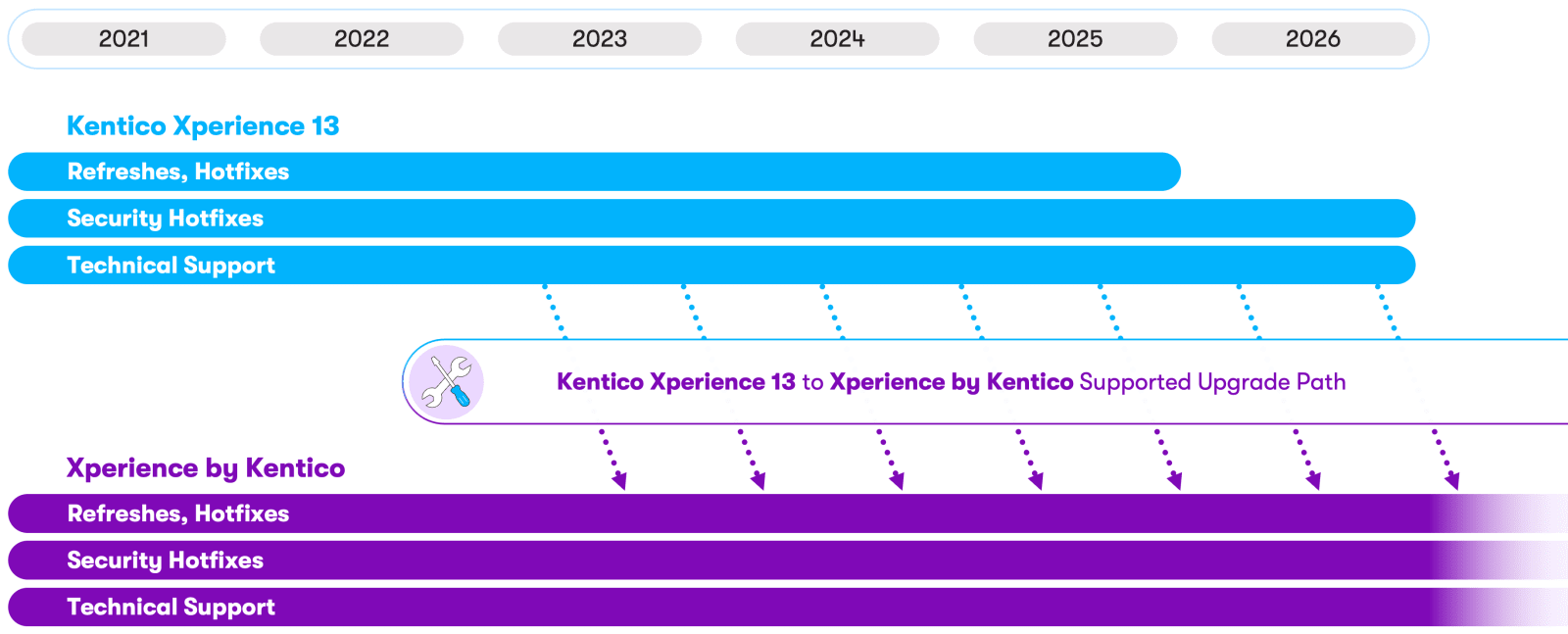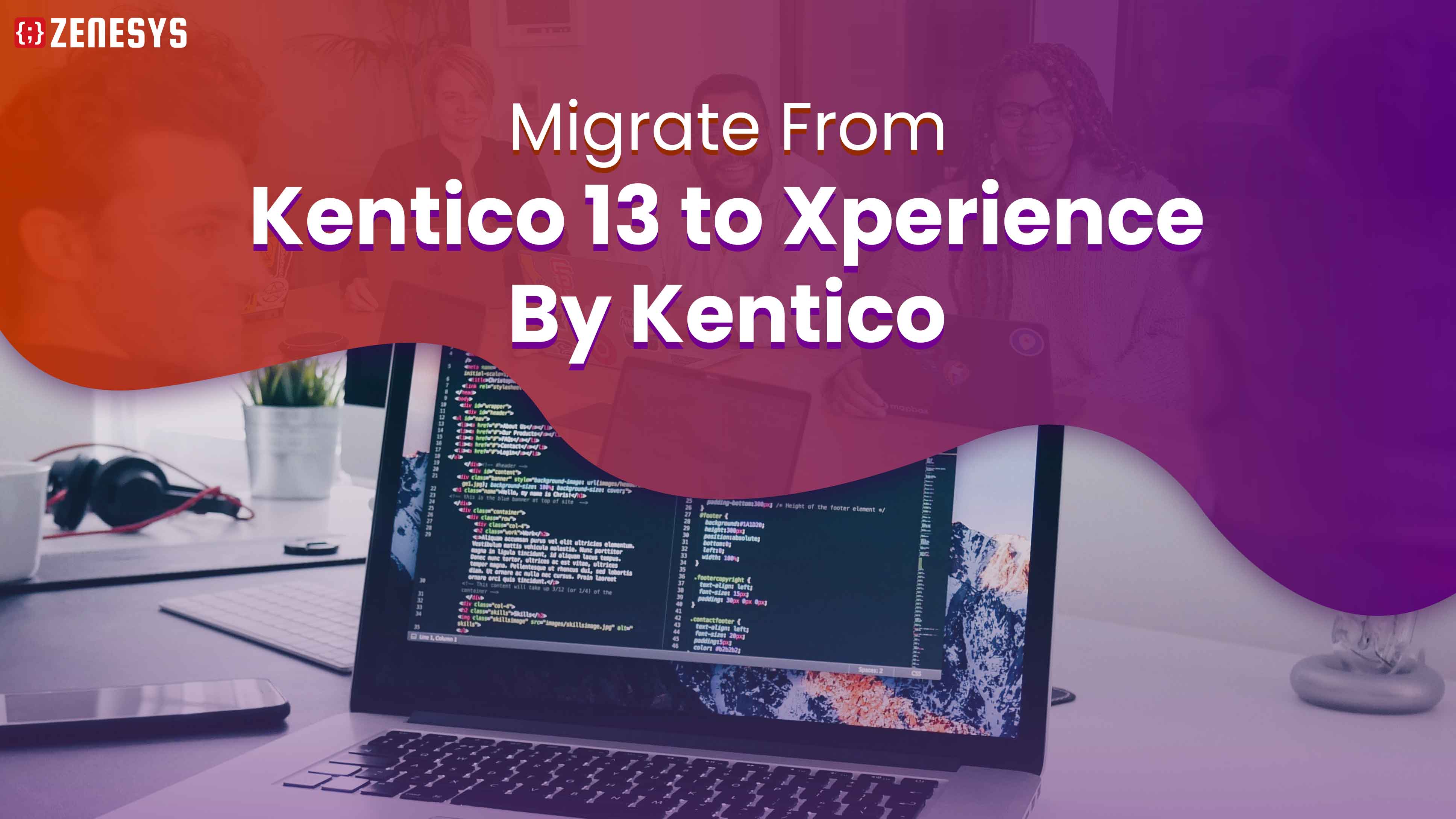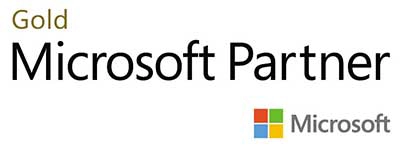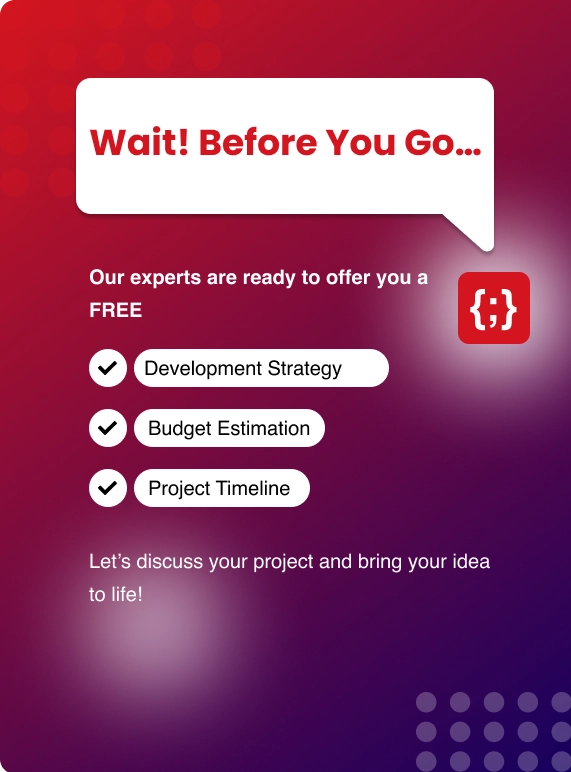Right now, thousands of websites are running on Kentico Xperience 13, unaware that the clock is ticking.
“According to W3Techs, Kentico powers 0.1% of all websites with known content management systems—representing a significant enterprise footprint that faces a critical deadline.”
If you're among these users, here's what you need to know: Kentico 13 support ends on December 31, 2026. After that date, you'll be operating without security patches, bug fixes, or technical assistance. That's not just inconvenient—it's risky.
But this isn't just about avoiding problems.
The transition to Xperience by Kentico represents something bigger. Right now, the 15605 website is made on Xperience by Kentico. It's your chance to modernize your entire digital presence. Think faster performance, better security, and tools that actually make marketing easier. The platform has been completely rebuilt from the ground up using modern architecture and cloud-native technology.
Many businesses view this as a forced upgrade. Smart ones see it as an opportunity. Between now and the end of 2026, you have a window to move from legacy technology to a platform designed for the next decade.
And if you're exploring your options, professional Kentico Migration services can help you make this transition smooth, strategic, and aligned with your business goals.
This article walks you through everything you need to know. Why the change matters. What you gain from it. How to execute it without disrupting your operations. And why waiting until the last minute could cost you more than just money.
Let's get started.
Why Support Ending Matters?
Kentico has made it official: technical support for Kentico Xperience 13 will cease entirely on December 31, 2026. But the impact starts earlier than that. From January 1, 2026 through December 31, 2026, Kentico will only provide security hotfixes—no bug fixes, no feature updates, no enhancements. After January 1, 2027, everything stops.
What does this mean for you?
First, security becomes your problem alone. When vulnerabilities are discovered, you won't get patches. Your IT team will need to find workarounds or live with the risk. For regulated industries or companies handling sensitive customer data, that's not acceptable.
Second, you assume full liability. Kentico has made it clear: after December 31, 2026, any damages, losses, or security incidents become your responsibility. That includes data breaches, business interruptions, and compliance violations.

Third, your costs will likely increase. Running unsupported software means more manual security monitoring, more custom fixes, and more time spent managing technical debt. What seems like saving money by delaying migration actually becomes more expensive.
The real question isn't whether to migrate.
It's when to start.
Still running on Kentico 13 or an older version?
It’s time to upgrade to Xperience by Kentico for improved performance, modern architecture, and a future-ready digital experience. Our experts at Zenesys can make your migration smooth and hassle-free.
Migrate to Xperience by KenticoThe Case for Xperience by Kentico
Xperience by Kentico isn't just a version upgrade
It's a complete reimagining of what a digital experience platform should be.
Released in 2023, it represents Kentico's modern, cloud-native approach to content management and digital marketing. The platform was built from scratch on .NET 8+, embracing modern development practices and a headless-first architecture.
Modern Technology Stack
The platform runs entirely on .NET 8 and higher. That means better performance, improved security, and access to the latest framework features. Unlike Kentico 13, which supported both .NET Framework 4.8 and .NET Core, Xperience by Kentico commits fully to modern .NET.
Developers can use React for modern frontend experiences. The platform supports GraphQL alongside REST APIs, making content delivery faster and more flexible. This isn't just technical jargon—it means your website loads faster and delivers better user experiences.
Hybrid Headless Architecture
Xperience by Kentico takes a hybrid approach. You can build traditional websites, headless applications, or a mix of both. The Content Hub serves as a centralized location where you create, manage, and distribute content across multiple channels.
Need to push content to a mobile app? Done.
Want to deliver personalized experiences on your website? Easy.
This flexibility matters because digital experiences happen everywhere now, not just on websites.
Built-In Marketing Tools
Marketing automation comes standard. You can create customer journeys, automate email campaigns, and personalize content without juggling multiple tools. The platform includes AI-powered insights that help you understand what's working and what isn't.
For marketers, this means less time wrestling with technology and more time focusing on strategy.
Cloud-Native Design
The platform was designed for the cloud from day one. You can choose fully managed SaaS hosting on Kentico's infrastructure, or deploy it in your own cloud environment. Either way, you get better scalability, improved security, and easier updates.
Cloud-native also means better DevOps integration. Modern CI/CD pipelines work seamlessly with the platform. That translates to faster deployments and fewer errors.
Future-Proof Investment
Technology moves fast.
Xperience by Kentico positions your business to adapt. The composable architecture means you can integrate new tools as your needs evolve. Monthly refresh releases keep you current with the latest features. And the subscription model ensures you're always on a supported version.
This matters more than most people realize. Platforms become obsolete when they can't keep pace with change. Xperience by Kentico was built specifically to avoid that problem.
Kentico 13 vs. Xperience by Kentico: Key Differences
Understanding what changes helps you plan better
Here's a detailed comparison of the two platforms:
| Feature | Kentico Xperience 13 | Xperience by Kentico |
|---|---|---|
| Launch Year | 2020 | 2023 |
| Technology Stack | .NET Framework 4.8 / .NET 8+ | Fully .NET 8+ |
| Architecture | Monolithic, tightly coupled | Headless, API-first, composable |
| Hosting Options | Self-hosted or cloud-hosted | Fully SaaS-managed or self-hosted |
| API Support | Primarily REST | GraphQL and REST |
| Frontend Frameworks | Legacy JavaScript frameworks | Modern React support |
| Content Management | Traditional CMS with built-in presentation | Decoupled Content Hub |
| E-commerce | Fully built-in | Via integrations or beta native commerce |
| Licensing Model | Perpetual or Subscription | SaaS Subscription only |
| Development Approach | Monolithic MVC patterns | Composable, microservice-oriented |
| Marketing Tools | Integrated DXP features | Enhanced customer journeys and automation |
| Administration Interface | Traditional unified interface | Modern, fast, updated interface |
| Support Lifecycle | Ends December 31, 2026 | Ongoing with monthly refreshes |
The differences run deep
Kentico 13 follows a traditional, all-in-one approach. Everything runs together in a monolithic system. Xperience by Kentico separates concerns, making each component more flexible and maintainable.
When Support Actually Ends
Let's be precise about the timeline. According to Kentico's official support lifecycle policy, here's exactly what happens:
January 1, 2026 through December 31, 2026:
- Technical support continues via remote communication
- Only security hotfixes will be released
- No bug fixes, patches, enhancements, or feature updates
- This is your last year of any official support
January 1, 2027 and beyond:
- All support, maintenance, and updates cease completely
- No security repairs of any kind
- No hotfixes or patches
- You assume full liability for all incidents
- Kentico accepts no responsibility for damages or losses
The company has been direct about this. After December 31, 2026, you're operating unsupported software at your own risk. This includes liability for security incidents, data breaches, compliance violations, and business interruptions.
One year of security-only support might seem like enough cushion.
It's not.
Major migrations typically take 6 to 12 months when done properly. That includes planning, technical preparation, execution, testing, and go-live. If you haven't started planning yet, you're already behind.
Curious to see how we’ve helped businesses migrate successfully?
Explore our recent Kentico 13 to Xperience by Kentico migration projects and see how Zenesys Solutions Inc delivers smooth, secure, and efficient transformations.
Explore Our WorkWhy You Need to Act Now
Waiting carries real costs
Here's why starting your migration sooner rather than later makes business sense:
Security Vulnerabilities Keep Growing
Software vulnerabilities don't stop appearing just because support ends. They actually become more attractive to attackers. Why? Because hackers know unsupported systems won't get patched. Every month you delay increases your exposure.
Data breaches cost millions. According to industry research, the average cost includes investigation, remediation, legal fees, regulatory fines, and reputation damage. Running known-vulnerable software after support ends makes you liable for all of it.
Migration Takes Longer Than You Think
A proper migration isn't a weekend project. You need to inventory content, assess customizations, test integrations, and train your team. Rushing this process leads to problems: broken features, lost data, poor user experiences.
Companies that start early can migrate methodically. They test thoroughly, iterate on problems, and launch confidently. Those who wait until 2026 will be scrambling, taking shortcuts, and accepting compromises.
Resources Become Scarce
Think about how many Kentico 13 users face the same deadline. As 2026 approaches, demand for migration expertise will spike. Kentico partners, developers with platform experience, and hosting resources will all be in high demand.
Starting now means you get first choice of resources. You can negotiate better terms, secure experienced teams, and avoid the rush.
Business Disruption Increases
Last-minute migrations create chaos. Teams work long hours. Budgets get blown. Things break. Customer experiences suffer. All because there wasn't enough time to do it right.
Early migration lets you schedule the work during slower periods. You can coordinate with other business initiatives. And you have time to solve problems without creating emergencies.
You Might Discover Complications
Many organizations don't realize how customized their Kentico 13 implementation has become. Custom modules, third-party integrations, complex workflows—these all need evaluation during migration. Discovering issues early gives you time to address them properly.
Discovering them a month before the deadline? That's when projects go off the rails.
The Business Case Gets Stronger
Every month you run Kentico 13, you're maintaining legacy infrastructure. You're supporting older code. You're missing out on the performance improvements, marketing tools, and development efficiency that Xperience by Kentico provides.
Early migration means you start realizing benefits sooner. Faster websites. Better conversion rates. More efficient marketing. These improvements compound over time.
The bottom line is simple: the cost of waiting exceeds the cost of acting now.
Migration Steps: Your Roadmap
A successful migration follows a structured approach. Based on Kentico's official upgrade guidance and industry best practices, here's the proven five-phase process:
Phase 1: Planning and Strategy
Start with the big picture. Define exactly why you're migrating and what success looks like. Set clear KPIs so you can measure results. Will you migrate everything at once, or take a phased approach?
Inventory your current website thoroughly. What content needs to move? What can be archived or removed? Which customizations are still necessary?
Review Kentico's upgrade documentation and migration guides. Understand what features work differently in Xperience by Kentico. The Migration Toolkit can automate structured content and data migration, saving significant time.
Get buy-in from stakeholders. IT, marketing, and leadership all need to align on timeline, budget, and goals. Without this alignment, projects stall.
Set realistic timelines with clear milestones. Most migrations take 6 to 12 months depending on complexity.
Consider whether Xperience by Kentico SaaS makes sense for your organization. The fully managed option removes infrastructure headaches.
Phase 2: Technical Preparation
Now get your environment ready. Create a complete copy of your production environment for testing. Never attempt migration directly on live systems. Set up a proper staging environment where you can test, break things, and learn.
Audit all third-party integrations. Which ones still work? Which need updates? Are there APIs that have changed or been deprecated?
Check custom code carefully. Xperience by Kentico uses modern .NET practices, so older code patterns may need refactoring. Identify project customizations that are now handled natively by the new platform—you might not need them anymore.
Document everything. Your future self will thank you.
Phase 3: Upgrade Execution
This is where the actual work happens. Use Kentico's automated upgrade tools and Migration Toolkit. These handle the heavy lifting of content and data migration. Don't try to do this manually—it's error-prone and time-consuming.
Let your application developers test and iterate on the upgrade process. They'll discover issues, work through solutions, and document the approach.
Ensure all workflows, forms, and templates function as expected. What worked in Kentico 13 might need adjustment in Xperience by Kentico because the platforms handle certain features differently.
This phase typically involves multiple iterations. Expect to run the migration several times in your test environment before getting it right.
Phase 4: Testing and Optimization
Quality assurance matters. Conduct thorough testing for broken links, UI issues, and load speed. Check every important user journey. Test forms, search functionality, and personalization features.
Pay special attention to SEO. Ensure all redirects work properly so you don't lose search rankings. This is where many migrations go wrong—they neglect the SEO impact and watch organic traffic drop.
Train your teams on the new interface and workflows. Xperience by Kentico has a modernized administration interface that works differently from Kentico 13. Give people time to learn.
Keep your Xperience by Kentico instance up to date during this process. The platform receives monthly refresh releases with improvements and new features.
Load test your new environment. Make sure it performs well under real-world conditions.
Phase 5: Go-Live and Post-Launch Support
The final phase requires careful coordination. Perform a content freeze during the final migration. This prevents content changes in the old system that won't carry over. Communicate clearly with content editors about the cutover schedule.
Execute your launch plan. Monitor everything closely during the first few days. Have your team ready to respond quickly if issues arise.
Collect feedback from users—both internal teams and external customers. What's working? What's confusing? What needs adjustment?
Analyze performance data. Are load times where you expected? Is the user experience meeting goals?
Implement continuous improvements based on what you learn. Migration doesn't end at launch—it's the start of your journey with the new platform.
Take advantage of Xperience by Kentico's monthly refresh releases to access the latest features. Staying current is much easier than falling behind and having to catch up later.
Curious how to migrate from an outdated CMS without downtime?
Read our in-depth guide on migrating from legacy platforms safely—no risky cutovers, no data loss. See how we make complex transitions smooth for businesses.
Read the Migration GuideHow Zenesys Solutions Inc Can Help You
Zenesys Solutions Inc brings deep expertise in Kentico platforms and enterprise CMS migrations. We've helped organizations successfully transition from legacy systems to modern digital experience platforms.
Our Migration Approach
We start with a thorough assessment of your current environment. What customizations exist? Which integrations need attention? What content governance challenges should we address during migration?
From there, we develop a detailed migration plan tailored to your specific needs. Not every organization should take the same approach. Your timeline, budget, risk tolerance, and business requirements all shape the strategy.
Our team handles the technical execution. We use Kentico's Migration Toolkit and proven processes to move content, migrate custom code, and update integrations. We test thoroughly before anything touches production.
Technical Expertise That Matters
Our developers understand both Kentico 13 and Xperience by Kentico deeply. That knowledge matters when you're dealing with features that work differently between platforms. We know where the common pitfalls are and how to avoid them.
We're proficient in modern .NET development, React, GraphQL, and the hybrid headless architecture that Xperience by Kentico uses. This technical depth ensures we can take full advantage of the platform's capabilities.
Beyond Migration: Optimization
Migration is an opportunity, not just a requirement. We help you rethink your digital presence during the transition. Should certain features work differently? Can we improve user experiences? Are there new marketing capabilities worth implementing?
We provide training for your teams so they can use Xperience by Kentico effectively. The platform has powerful features, but only if people know how to use them.
Post-launch, we offer ongoing support to ensure everything runs smoothly. Questions will come up. Adjustments will be needed. We're there to help.
Why Partner With Us
Kentico migrations done poorly create long-term problems. Rushed implementations miss opportunities. Technical shortcuts create technical debt.
We take the time to do it right. That means proper planning, thorough testing, and attention to details like SEO, performance, and user experience. We've seen what happens when migrations are done hastily—we make sure that doesn't happen to you.
Our goal is simple: get you running on Xperience by Kentico smoothly, efficiently, and positioned to take full advantage of the platform. Ready to start planning your migration? Let's talk.
.jpg?lang=en-US&ext=.jpg)

.webp?lang=en-US&ext=.webp)

.webp?lang=en-US&ext=.webp)

